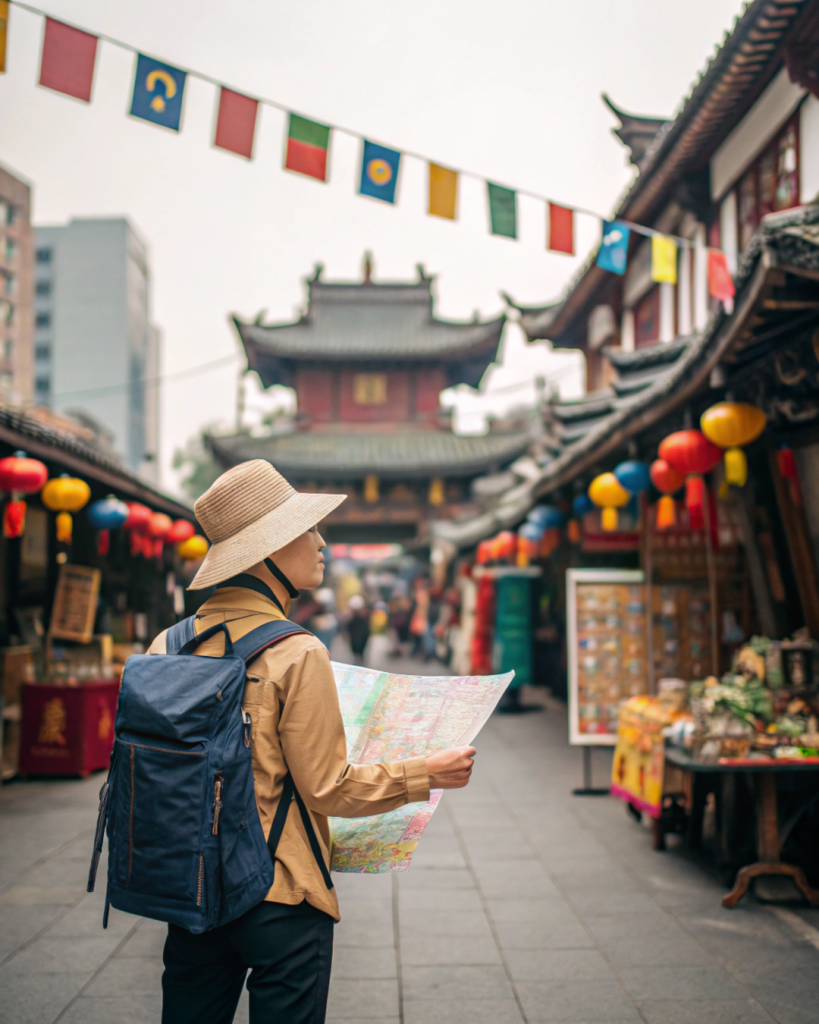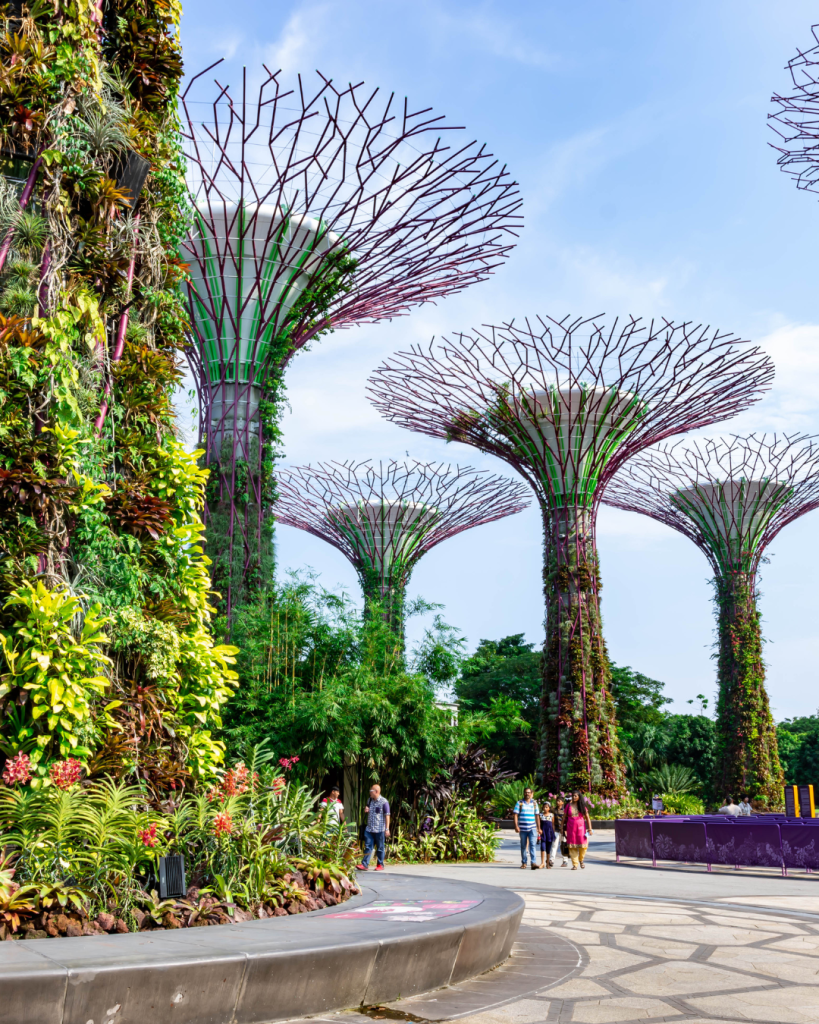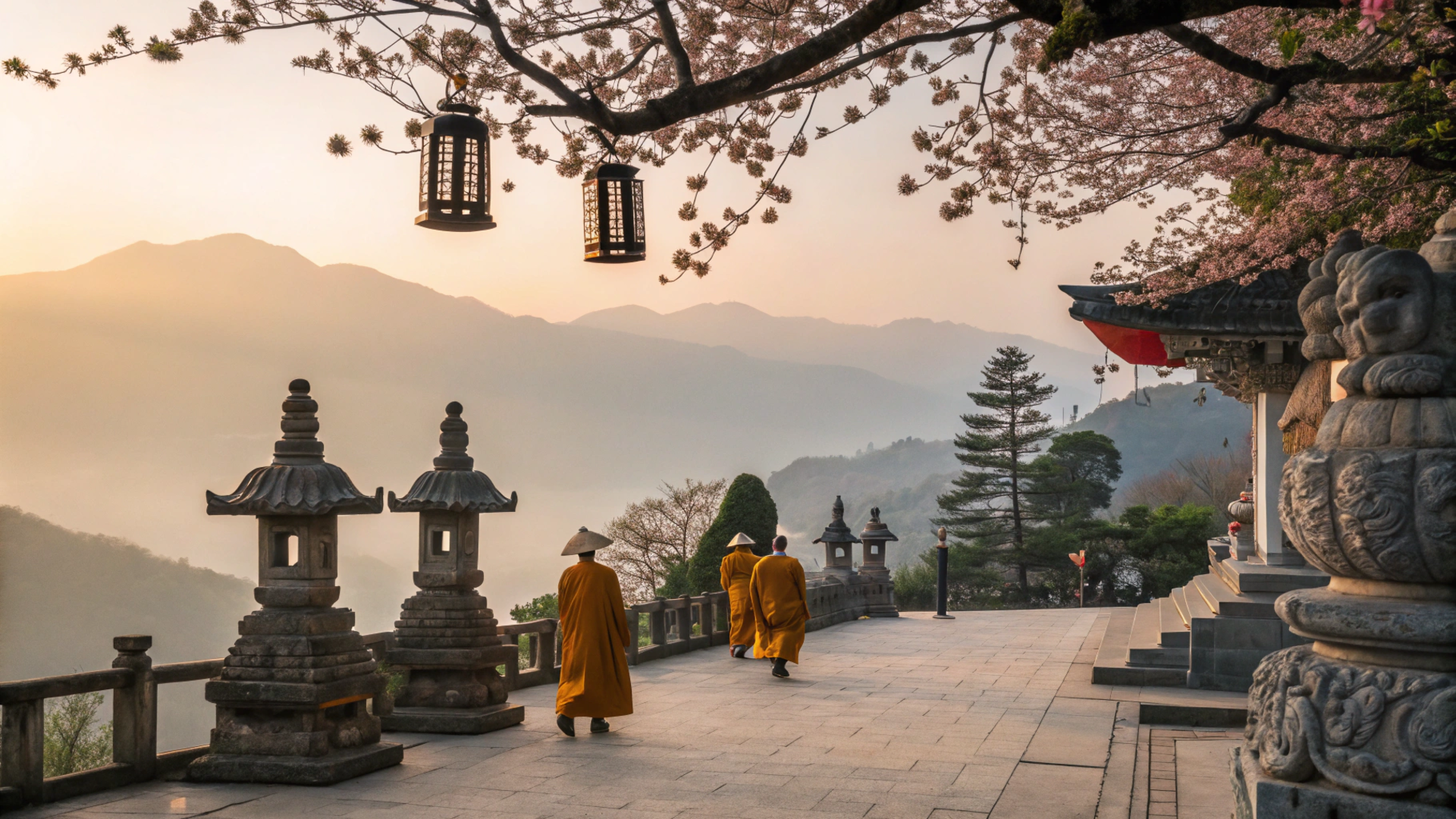The first time I witnessed a Thai Yi Peng lantern festival in Chiang Mai, I felt like I’d stepped into a dream. Thousands of golden lanterns floated into the night sky, their glow reflecting off the faces of locals chanting ancient prayers. But Asia’s cultural magic isn’t confined to grand festivals—it’s in the quiet moments too.
Like sipping matcha in a Kyoto teahouse while a kimono-clad hostess demonstrated the precise choreography of a tea ceremony, or watching a Balinese farmer meticulously arrange canang sari (daily offerings) on a dusty temple step.
Asia’s cultures are alive, pulsing with rituals, art, and stories that have shaped humanity for millennia. Let me guide you through its wonders, with practical tips to help you experience it all authentically.
When to Visit: Timing Your Trip to Cultural Highlights
Asia’s cultural calendar is a whirlwind of festivals, harvest celebrations, and spiritual observances. To make the most of your trip, align your travels with these unforgettable events:
Festivals Worth Planning Around
- Japan’s Cherry Blossom Season (March–April): Hanami (flower-viewing) parties erupt under sakura trees in Tokyo’s Ueno Park and Kyoto’s Philosopher’s Path. Locals picnic on bento boxes and sake, celebrating fleeting beauty.
- India’s Diwali (October–November): The “Festival of Lights” transforms cities like Jaipur and Varanasi into a kaleidoscope of oil lamps, fireworks, and marigold garlands. Don’t miss the Rangoli art—intricate floor designs made with colored powders.
- Thailand’s Songkran (April): The Thai New Year is a 3-day water fight! Join locals in Bangkok’s Khao San Road or Chiang Mai’s moat area, where pickup trucks spray crowds with hoses. Pro tip: Protect your phone in a waterproof pouch!
- Indonesia’s Nyepi (March): Bali’s “Day of Silence” is surreal—no lights, noise, or even airport operations. Locals meditate, and tourists stay indoors. The night before, giant ogoh-ogoh (demon statues) parade through villages.
Regional Seasonal Gems:
- Autumn in South Korea (September–November): Hike Seoraksan National Park to see maple trees blaze red, then join Chuseok (harvest festival) feasts with songpyeon (rice cakes).
- Winter in Mongolia (December–February): Experience Tsagaan Sar (Lunar New Year) with nomadic families, sharing steamed dumplings and fermented mare’s milk.
Pro Tip: Use FestivalSherpa.com or local tourism boards’ Instagram accounts to track exact dates—many festivals follow lunar calendars!
Getting There: Navigating Asia’s Cultural Gateways
Asia’s cultural hubs are well-connected, but transportation styles vary wildly. Here’s how to move like a local:
Major Airports & Entry Points
- Tokyo (HND/NRT): Gateway to Japan’s shrines and sushi.
- Delhi (DEL): Start your Indian odyssey with a rickshaw ride through Old Delhi’s spice markets.
- Bangkok (BKK): Connect to Laos, Cambodia, or Myanmar for temple-hopping.
Trains: Culture in Motion
- Japan’s Shinkansen: Zip from Tokyo to Kyoto in 2.5 hours. Buy a JR Pass before arriving—it’s cheaper!
- India’s Palace on Wheels: A luxury train journey through Rajasthan’s forts, with onboard Kathak dance performances.
- Vietnam’s Reunification Express: Coastal views from Hanoi to Hue, passing villages where conical-hatted farmers tend rice paddies.
Local Transport: Embrace the Chaos
- Tuk-tuks (Thailand/Cambodia): Negotiate fares upfront—a ride in Bangkok should cost ฿100–200 ($3–6).
- Cycle Rickshaws (India): Let a wallah pedal you through Jaipur’s Pink City (₹50–100/$0.60–1.20 per km).
- Ferries (Indonesia): Island-hop from Bali to Lombok, but avoid sketchy operators—12Go Asia app compares reviews.
Cultural Insight: In Japan, train platforms have marked “silent zones.” In India, honking isn’t rude—it’s a way to say, “I’m here!”
Costs: Budgeting for Cultural Experiences

Asia caters to all budgets, but cultural activities can range from free to lavish. Here’s a detailed breakdown:
Budget Travel ($30–50/day)
- Temple Donations: $1–5 at Angkor Wat or Bali’s Tirta Empul.
- Street Food: $2–5 for a bowl of pho in Hanoi or kottu roti in Sri Lanka.
- Free Rituals: Join morning almsgiving to monks in Luang Prabang, Laos—just buy sticky rice (10,000 LAK/$0.50) at the market.
Mid-Range ($70–150/day)
- Workshops: Batik painting in Yogyakarta (30),ThaicookingclassesinChiangMai(30),ThaicookingclassesinChiangMai(40), or calligraphy lessons in Seoul ($50).
- Theater Shows: Beijing Opera tickets start at ¥200 (28),whileBali’s∗Kecak∗firedancescost150,000IDR(28),whileBali’s∗Kecak∗firedancescost150,000IDR(10).
Luxury ($200+/day)
- Ryokan Stays: Kyoto’s Tawaraya charges ¥70,000+/night ($500+) for kaiseki meals and private onsens.
- Private Guides: Hire a scholar for a bespoke tour of Bhutan’s monasteries ($150–300/day).
My Advice: Splurge on one “wow” experience—like a sunrise hot-air balloon over Bagan’s temples ($320)—then balance it with street food and homestays.
Where to Stay: Sleep Steeped in Tradition
Skip generic hotels and immerse yourself in heritage:
Japan: Ryokans & Minshuku
- Gora Kadan (Hakone): A former imperial villa with open-air onsens. Rates: ¥100,000+/night ($700+).
- Minshuku (Family-Run Guesthouses): For budget stays, try Fuji-Hakone Guest House ($80/night with tatami mats and home-cooked nabe).
India: Heritage Palaces
- Samode Haveli (Jaipur): A 19th-century mansion with hand-painted frescoes. Rooms from ₹15,000/night ($180).
- Kerala Houseboats: Cruise backwaters in a converted rice barge ($150–300/night, includes meals).
Southeast Asia: Homestays
- Sapa, Vietnam: Sleep in a H’mong family’s stilt house ($10/night), trekking to rice terraces by day.
- Bali, Indonesia: Book a bale (thatched gazebo) in Ubud’s rice fields via Airbnb ($40–80/night).
Booking Tip: Use CulturalStay.com for curated traditional stays, or filter Airbnb for “historic homes.”
Must-See Cultural Landmarks

Asia’s iconic sites are windows into its soul. Don’t miss these:
Temples & Spiritual Sites
- Angkor Wat (Cambodia): Arrive by 5 AM to watch sunrise silhouette its lotus-shaped towers. Hire a tuk-tuk driver ($20/day) who knows hidden spots like Ta Prohm’s tree-strangled ruins.
- Borobudur (Indonesia): Climb this 9th-century Buddhist temple at dawn. Pro tip: Buy the “Borobudur + Prambanan” combo ticket (IDR 650,000/$42).
- Golden Temple (India): Amritsar’s holiest Sikh site serves free meals (langar) to 50,000+ people daily. Volunteer in the kitchen—peeling garlic is a humbling icebreaker!
Living History & Architecture
- Gyeongbokgung Palace (South Korea): Rent a hanbok (₩15,000/$12) for free entry and photos among Joseon-era pavilions.
- Hoi An Ancient Town (Vietnam): At night, the Thu Bon River glows with floating lanterns (drop one for luck, 20,000 VND/0.80).Tailorsherecanstitchasilk∗aˊodaˋi∗in24hours(0.80).Tailorsherecanstitchasilk∗aˊodaˋi∗in24hours(50–100).
Museums & Workshops
- Tokyo National Museum: See samurai swords and ukiyo-e prints (¥1,000/$7 entry).
- Ubud’s ARMA Museum (Bali): Free traditional dance shows every Tuesday at 7:30 PM.
Food Recommendations: A Taste of Heritage
Asian cuisine is culture on a plate. Here’s how to eat like a local:
Street Food Staples
- Japan: Takoyaki (octopus balls) in Osaka’s Dotonbori (¥500/$3.50).
- Thailand: Khao soi (coconut curry noodles) at Chiang Mai’s Khao Soi Lam Duan (฿50/$1.50).
- India: Pani puri (crisp shells filled with spiced water) from Mumbai’s Juhu Beach stalls (₹20/$0.25 each).
Fine Dining with History
- Kyoto, Japan: Kaiseki at Michelin-starred Kikunoi (¥25,000/$175)—12 courses celebrating seasonal ingredients.
- Jaipur, India: Laal maas (fiery lamb curry) at 1135 AD, a restaurant inside Amber Fort (₹2,500/$30).
Cooking Classes
- Bangkok: Blue Elephant’s half-day class ($75) includes a market tour and pad Thai tutorial.
- Hoi An: Red Bridge Cooking School ($45) teaches cao lau noodle-making using water from the town’s ancient well.
Etiquette Tips:
- Chopsticks: Never stick them upright in rice—it mimics funeral incense.
- Hands: In India/Middle East, eat with your right hand; the left is taboo.
Local Tips: Respecting Customs & Connecting Deeply
Dress Codes
- Temples: Cover shoulders and knees. Carry a sarong—Bali’s temples rent them for 10,000 IDR ($0.65).
- Mosques: Women should bring a headscarf (e.g., Malaysia’s Blue Mosque in Shah Alam).
Gestures & Greetings
- Thailand: Wai (pressed palms bow)—return it if someone greets you first.
- Japan: A slight bow suffices, but don’t overdo it—30 degrees is standard.
- Mongolia: Sniff a friend’s cheek instead of hugging (traditional greeting).
Gift-Giving
- China: Avoid clocks (symbolize death) or white flowers (funerals).
- Korea: Offer/receive items with both hands—a sign of respect.
Phrases to Learn:
- Thai: Sawasdee krab/ka (Hello, male/female)
- Japanese: Oishii desu! (It’s delicious!)
- Hindi: Dhanyavaad (Thank you)
Hidden Gems: Beyond the Tourist Trail
For deeper immersion, seek these under-the-radar experiences:
- Bhutan’s Paro Valley: Attend a tsechu masked dance festival. Locals believe watching the dances cleanses sins.
- Myanmar’s Bagan: Learn thanaka (traditional face paint) from vendors at sunrise. They’ll grind fragrant bark into a paste for 1,000 MMK ($0.50).
- Sri Lanka’s Countryside: Join a pol katu (coconut harvest) near Galle. Farmers will teach you to climb palms barefoot!
Pro Tip: Use Meetup.com or local Facebook groups to find cultural exchange events.
Nearby Cultural Destinations
Extend your trip with these day trips or weekend getaways:
- From Tokyo: Takayama (2.5 hours by train), an Edo-era town with sake breweries and morning markets.
- From Delhi: Jaipur (4 hours by car), where Amer Fort’s mirrored palace will leave you speechless.
- From Bangkok: Ayutthaya (1.5 hours by train), cycling past Buddha heads entwined in banyan roots.

